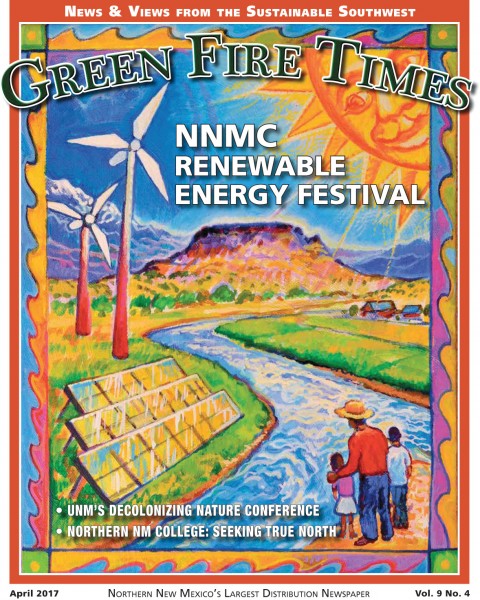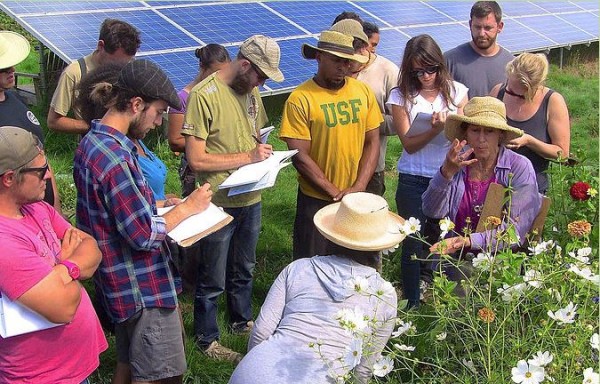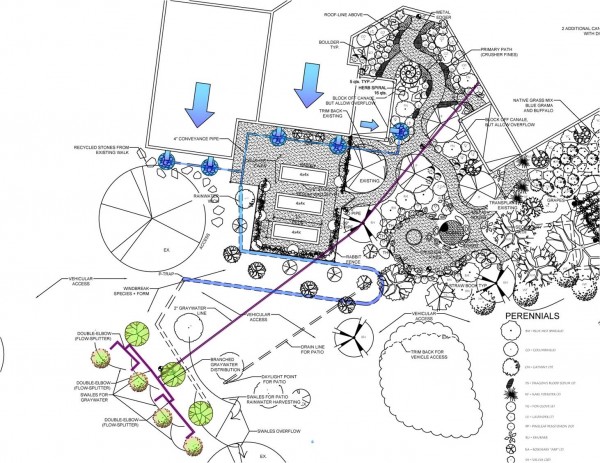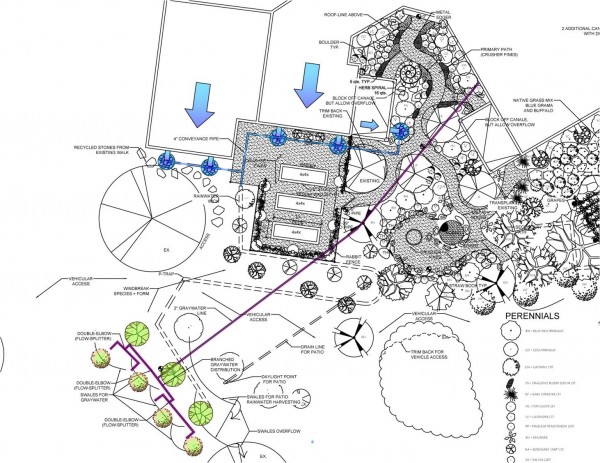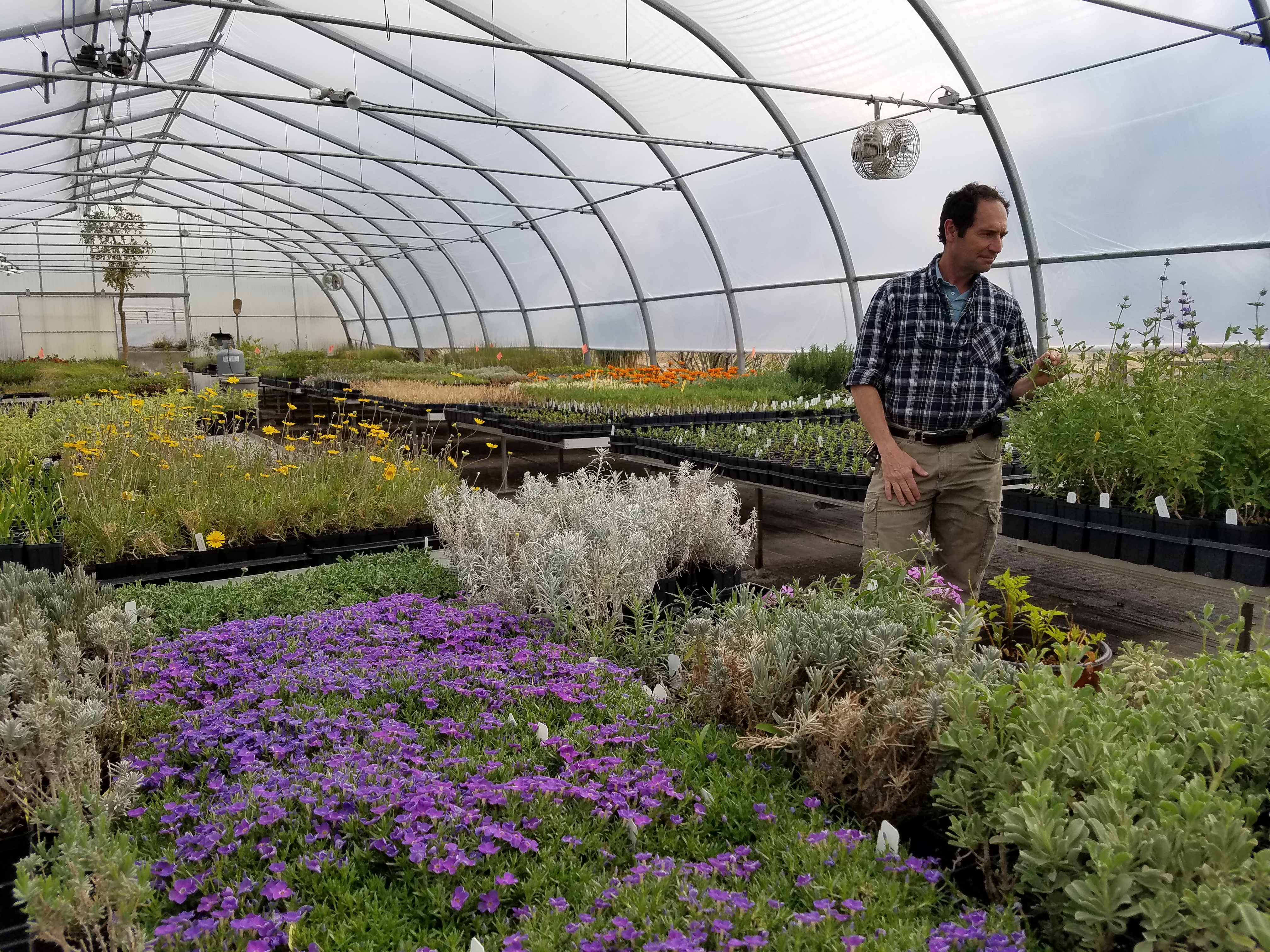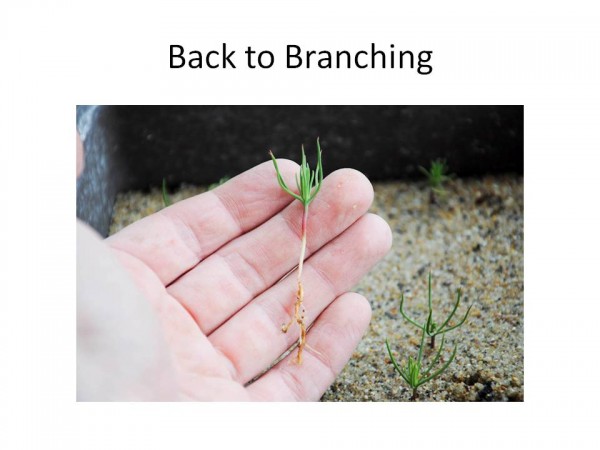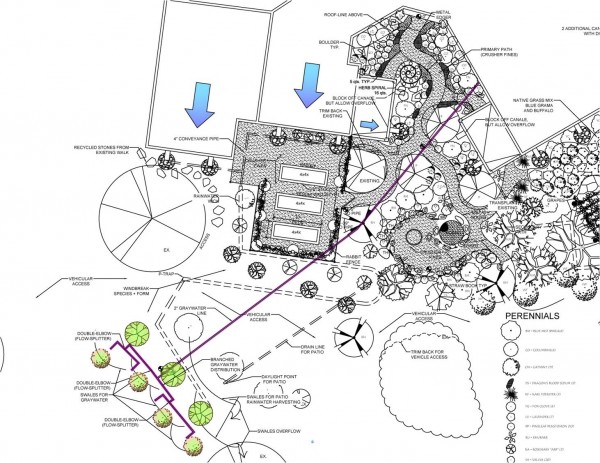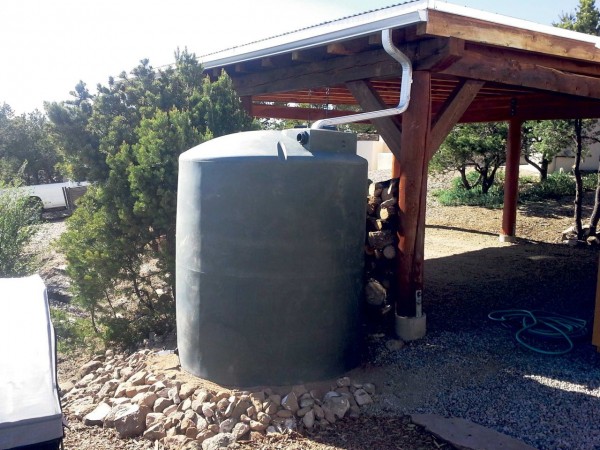The PermaDesign Weblog, with Nate Downey and Melissa McDonald!
Earth Day with Green Fire Times
Celebrate Earth Day Saturday the 22nd with a full day of events in northern New Mexico. Green Fire Times has a great list of Earth Day events throughout the region with something for everyone.
04/12/2017 | (1) Comments
Vocational Skills in Permaculture
Our friends at the The Permaculture Skills Center are training next generation land stewards with their Ecological Landscaper Immersion program. Through a hands-on approach with real-world projects, participants will gain a foundation in permaculture, ecoliteracy, design, and project management/installation. The 6-month program is directed towards landscapers, land managers, designers, educators, and land-based entrepreneurs. Upon completion, participants will receive both a Permaculture Design Certificate and an Ecological Landscaper Certificate of Training.
04/11/2017 | (0) Comments
River’s Edge
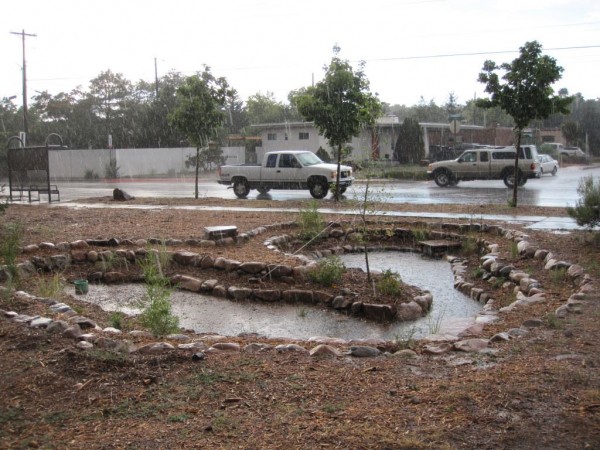
One of the great things about this rain garden is that it displays the permaculture concept known as “edge.” See how the banks of the garden undulate and how the peninsula protrudes into what could have been a simple circle. This configuration allows for greater stormwater infiltration into the neighboring soil. As Santa Fe’s River and Watershed Coordinator, Melissa worked with The Rain Catcher, Southwest Urban Hydrology, the Santa Fe Watershed Association, and countless other supportive members of our community. The project was funded in part by the city’s Santa Fe River Fund. (Check the box on your water bill!)
Tomorrow at 11:00 a.m. you can help cut the ribbon of this exciting new project across from the end of Sicomoro St. next to Bicentennial Park (just off West Alameda.)
04/07/2017 | (0) Comments
SLIDE 43: Wicking Action
Notice how the 4” pipe doubles in width in this slide as the underground water-harvesting system is revealed on the plan. It gets wider because the pipe becomes a perforated pipe covered by a root-prevention sock. This perforated pipe is surrounded by lava rock or some similar porous, inert material (BUT NOT GRAVEL). I like to use pumice, scoria, and Growstone.
04/06/2017 | (0) Comments
SLIDE 42: Collection
But branching is not always about distribution of energy (in the previous case, greywater). Branching can also be about collection and conveyance of energy (typically toward storage, filtration, and ultimately to distribution). It’s time, now, to look at the form of branching that collects and conveys. The blue arrows circles, and lines in this slide show the beginnings of that branching pattern. In the case of roofwater collection, we see short, stubby branches known as canales (much like the short, stubby see ends of the greywater pipes above. The canales dump runoff from the roof into catchment drains that are covered with river rock. These subsurface drain boxes are connected to 4” diameter undergound pipes that direct water toward a deisred goal that we’ll begin to see in the next slide.
04/04/2017 | (0) Comments
Salman’s Back, Spawning Passion, Plants
From my most recent article:
I can’t remember grabbing a bottle of whiskey and driving my Chevy to the levee, but the closing of Santa Fe Greenhouses five years ago was definitely an American Pie moment. But people have to do what people have to do, and David Salman, the founder and former president of Santa Fe Greenhouses, has to grow plants.
04/03/2017 | (1) Comments
SLIDE 41: Back to Branching
But what does all of this greywater stuff have to do with permaculture’s “branching” pattern. Branching is often about distributing energy evenly--just as this plant-start likes to do. In the case of the greywater system just described, like the very small sapling, it has a long stem with a number of short branches. Other greywater systems that we have designed and installed have much shorter distribution stems (trunks) and much longer branches. The big factors involved in determining the ratio of primary trunk/stem to secondary/tertiary branches are gravity, geology, existing structures, existing plant material, and the needs and desires of our clients.
04/02/2017 | (0) Comments
SLIDE 40: To Review
To review, the purple lines indicate greywater pipes. Soon we will be looking at the blue arrows at the top of the screen, but now let's focus on the green plants forming an essential part of the windbreak that we are creating for the veggie garden, the fire-pit patio, the horno, the fruit-tree guilds, the undulating walkways, and the herb spiral. This greywater distribution system is critical to ensuring that the rest of the landscape performs at its fullest potential.
03/31/2017 | (0) Comments
SLIDE 39: Mulch
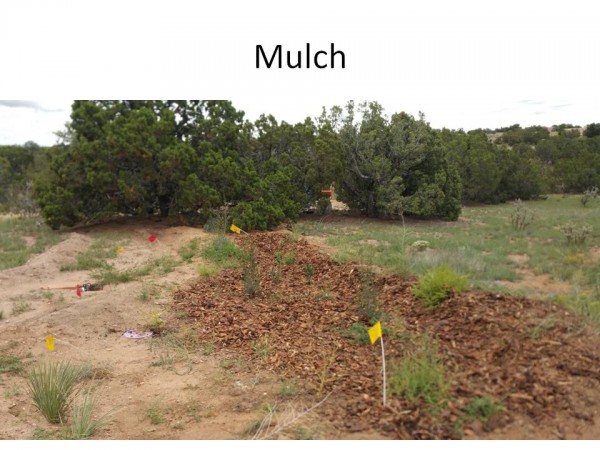
Finally…we get to the mulch. This is essential. It’s the sponge that absorbs the greywater, and it also acts as a biofilter. That is, it not only separates the useful water from the not yet useful particulate that might be present. After this separation, particulate can be brokendown by mycelium, bacteria, insects, etc. and be a source for all forms of life up and down (mostly down) the food chain. The mulched basin at the end of a well designed greywater system also prevents standing water as it simultaneously feeds the plant material in planted along the basin. (Stay tuned to the webblog for after pictures).
03/29/2017 | (0) Comments
Charlee Myers
Great to see Charlee Myers in The Toas News recently promoting rainwater harvesting. I’ve known Charlee a long time, and he is a great guy. We both have chapters in the American Rainwater Catchment System’s new manual, “Rainwater Harvesting.” His chapter is about harvesting precipitation in extreme conditions such as the cold winters we can sometimes get in northern New Mexico. My contributions to the manual include chapter 3 ‘Passive Rainwater Harvesting’ and chapter 19 ‘The Business of Rainwater Harvesting.’ Check out arcsa.com to buy the peer-reviewed textbook.
03/27/2017 | (0) Comments
